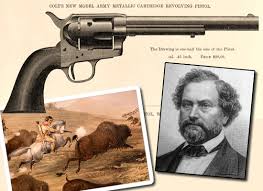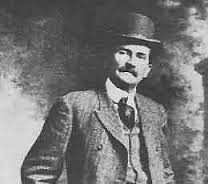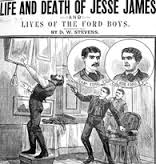Mary Graves Clark
If Mary Graves had stayed in Indiana where she was born on November 1, 1826, she might have married the boy next door, taught students to read and write at a school house in her hometown, and lived out her days watching her children and grandchildren grow up on the family farm. Her life, however, took a different course when her family joined the Donner Party in 1846 and headed west.
Mary was nineteen when her father, Franklin, made the decision to move his family to California. The wagon train the Graves joined was organized by George and Jacob Donner and James Reed and their families. The initial group set out from Springfield, Illinois in April and was joined by additional members when it reached Independence, Missouri. Franklin and Elizabeth Graves and their nine children joined the Donner Party in August at Fort Bridger, Wyoming, with their belongings piled in three large wagons.
Mary was excited about the journey. She had no doubt heard stories of the golden land of opportunity and couldn’t wait to see its riches for herself. She knew her family might experience difficulties getting there but that had not put a damper on her gleeful spirit. She didn’t care that the trail was treacherous, and she wasn’t afraid of the Indians that guarded the way. She placed all her faith in God and her father to get her and her family to their new home safely.
Historical records note that Mary was a beautiful young lady with dark eyes and long, wavy black hair. She carried her slender, fivefoot, seveninch frame with grace. Her complexion was creamy olive. She captured the attention of many of the twenty-two single men in the party, but she was engaged to John Synder, the driver of one of her father’s teams.
On October 5, 1846, John Synder and Milton Elliott, another driver exchanged heated words over whose team of oxen could pull a load raced each other to the top of the hill. John’s and Milton’s teams got tangled up as they raced each other to the top of the hill. John was furious and started cussing at Milton and beating his livestock with a whipstock. James Reed stepped in and tried to calm him down. John thought James was threatening him, and he jumped off his wagon and beat James over the head with the butt end of his heavy whipstock while Mary looked on. When James Reed managed to stand up and wipe the blood from his eyes, his wife ran over to help him, and John hit her over the head too. James quickly pulled out a knife and stabbed John. Mary’s intended died fifteen minutes later. The stunned onlookers were outraged. They wanted to hang James. Mary was asked to sit in judgment of him, but she refused. James was banished from the group.
The gleam in Mary’s eyes had started to fade. The journey west was grueling. In addition to having battled the heat and rough terrain, the party had taken a “shortcut” to California that actually took them several hundred miles out of their way. Lack of water and a variety of petty arguments, like the one between John, Milton, and James, created strife among the party members. Their food was running low and many of their oxen and horses had been stolen by Indians.
Mary and the others finally reached the Sierra Nevada mountains on October 28th, 1856.
This final pass usually brought joy to weary emigrants. It brought terror and dismay to the Donner Party. They could see dark skies ahead. Soon the winter storm clouds dumped six inches of snow on the travelers. They were trapped; the snow prevented them from going any further.
The emigrants quickly built crude cabins near a lake to protect them from the cold. Mary’s family shared their tiny makeshift home with another large family in the party. Food was scarce. Time passed and the snow continued to fall.
By mid December, Mary, her father, and Charles Stanton realized they would have to organize a team and go for help. Fifteen members of the group, including Mary, her father, her sister, her brother-in-law, and two Indian guides volunteered to be a part of the party and make their way over the summit to Sutter’s Fort.
Wearing snowshoes made from oxbows and cowhide and carrying enough provisions to last them six days, the “Forlorn Hope” party set off. They soon encountered snowdrifts that varied in depth from twelve to sixty feet. The fifteen traveled without saying a word, their eyes fixed on the ground. The fatigue and dazzling sunlight made some of them, such as Charles Stanton, snowblind. Every day, Charles fell further and further behind the others. On the third day, Charles staggered into camp long after the others had finished their meager meal. He never complained but struggled daily to keep pace with the others. Mary’s heart broke for him.
On the fifth morning, the members of the Forlorn Hope set out, leaving Charles behind at the smoldering campfire, smoking a cigarette. All day long Mary kept looking back to see if Charles had caught up with the party. By the day’s end, she knew he wasn’t coming. Indeed, Charles Stanton had died.
Mary’s father and two other men were the next to die. Before Franklin Graves passed away, he called his daughters to his side. “You have to do whatever you can to stay alive. Think of your mother and brothers and sisters in the cabin at the lake. If you don’t make it to Sutter’s Fort, and send help, everyone at the lake will die. I want you to do what you have to…. Use my flesh to stay alive.” The mere thought of doing such a thing made the girls cry, but they knew he was right. They would have to resort to cannibalism to survive.
The remaining eleven members of the Forlorn Hope party sat down in the snow to discuss whether to go ahead without provisions, or go back to the cabins, where we must undoubtedly starve. Some of those who had children and families wished to go back, but the two Indians said they would go on to Sutter’s Fort. Mary opted to continue on too and the others agreed.
As the party continued on together, another furious storm bombarded the Sierras. More men died and the women were weakening. It had been twelve days since the rescue team had left their loved ones and friends at the cabins. They had walked so many miles that their feet were bleeding. They were starving and cold
One morning Mary and fellow party member William Eddy struck out on their own to find food. They had gone two miles when they noticed a place where a deer had slept the night before. The two burst into tears at the hope of finding the animal. They dropped to their knees to pray. When they sighted the buck, William fired his rifle at it. The deer continued running. The deer dropped into the snow and the pair raced toward it. William cut a deep V in its throat, and the two fell on the animal and drank the warm blood.
Within a few days, there was nothing left of the deer and starvation again set in. Only five women and two men now remained. The feeble party traveled on day after day. Their strength was almost gone when someone noticed tracks in the snow. The group followed the tracks until they came in full view of a Washo Indian camp. The Indian women and children stared in amazement at the skeletonlike figures that came into their camp. They quickly fed the starving group and tended to their battered feet and other wounds. It had been thirtytwo days since the party had left the lake.
Mary Graves no longer looked like she did when the journey began. Her high cheekbones were grotesquely prominent and her cheeks were buried deep below them. Her eyes were dim and sunken. Her onceperfect skin now had the appearance of baked leather. With good food and much care, her looks would be restored, but her spirit would never be the same.
Relief parties from Sutter’s Fort rescued Mary’s family and the rest of the surviving members of the Donner Party in April. Mary’s mother and fiveyear old brother had died. Mary and her sister, Sarah, were now in charge of their younger siblings.
The fortysix remaining members of the party were escorted to Sutter’s Fort. The horrific tales of survival they relayed to the inquisitive people who gathered around them brought tears to their eyes. Mary’s once cheerful disposition had now been replaced with a despondent nature. She thrived on the stories told about her mother in her last days. Mary’s mother was praised by the survivors for her charity. She was a generous woman who gave all she had to give. Mary was inspired by her mother’s actions, and it spurred her on despite her depression.
On May 16, 1847, Mary married Edward Pyle, a member of the relief expedition that went to the aid of the Donner Party. The couple left Sutter’s Fort with her brother and sisters and settled in the San Jose area. It was here she entered the teaching profession. Her career was interrupted when Edward disappeared while on a business trip in Tulare County, California. Mary’s search for her husband ended after a year when his murdered body was discovered near Tulare Lake.
Antonio Valencia was tried and convicted for the crime. Valencia had dragged Edward one hundred yards at the end of his rope and then cut Edward’s throat. His body was shot full of arrows to give the impression that death was the result of an Indian attack.
Valencia was sentenced to be hanged and Mary was determined that justice would be served. On the off chance a vigilante group would try to kill him, either by poisoning or shooting him before the execution date, Mary went to the prison everyday and prepared the murderer’s meals.
In 1852, Mary married a sheep rancher named J.T. Clarke and they moved to a town near the White River in Tulare County. She became the region’s first school teacher, educating generations of children including the six she and J.T. had.
Mary always stayed close to her home. Other members of the Donner Party eventually retuned to the “place of horror” as Mary called it, but she never did.
Mary Anna Graves Clark died of pneumonia in Traver, Tulare County on March 9, 1891. Her twentysix year old son had been struggling with the same ailment for several days. He passed away four days prior to his mother. Mary was 65 years old when she died. She is buried at the Visalia Public Cemetery in Tulare County.






